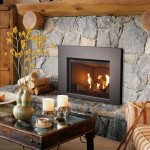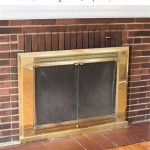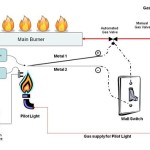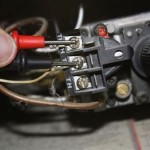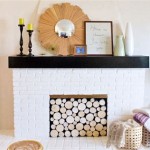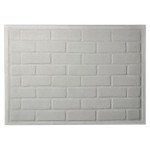Ceramic Tile Fireplace Design: A Comprehensive Guide
Ceramic tile fireplaces represent a versatile and aesthetically pleasing design choice for homeowners seeking a durable and customizable hearth. The selection of ceramic tile offers a broad spectrum of colors, patterns, sizes, and textures, enabling the creation of a unique and personalized focal point in any living space. This article explores the key aspects of ceramic tile fireplace design, including tile selection criteria, design considerations, installation best practices, and maintenance requirements.
Ceramic Tile Selection: Key Considerations
Selecting the appropriate ceramic tile for a fireplace involves careful consideration of several factors, primarily centered around heat resistance, aesthetics, and practicality. Not all ceramic tiles are created equal, and their suitability for fireplace applications varies significantly. It is crucial to choose tiles specifically designed to withstand the high temperatures associated with fireplace operation.
Heat Resistance: The primary requirement for fireplace tiles is their ability to endure elevated temperatures without cracking, warping, or discoloring. Porcelain tiles, a subset of ceramic tiles, are generally preferred due to their high density and low water absorption rate, resulting in enhanced heat resistance. Look for tiles with a PEI (Porcelain Enamel Institute) rating of 3 or higher, indicating their suitability for moderate to heavy foot traffic and, by extension, their durability under heat stress. Natural stone tiles, such as slate or travertine, can also be used, but they may require sealing to prevent staining and damage from soot.
Aesthetic Appeal: The aesthetic considerations are subjective and depend on the overall design scheme of the room. Ceramic tiles offer unparalleled flexibility in terms of style, ranging from traditional to contemporary. Consider the color palette of the room and choose tiles that complement or contrast effectively. Patterned tiles can add visual interest and create a focal point, while solid-colored tiles provide a more understated and elegant look. The size of the tile also plays a crucial role; larger tiles can create a sense of grandeur and minimize grout lines, while smaller tiles allow for intricate designs and mosaics.
Maintenance and Durability: Fireplace tiles are subjected to soot, ash, and potentially accidental impacts. Therefore, durability and ease of maintenance are paramount. Glossy tiles are generally easier to clean than matte tiles, as they offer a smoother surface that resists dirt and grime accumulation. However, glossy tiles may be more prone to scratches and visible fingerprints. Matte tiles, on the other hand, offer a more textured surface that conceals imperfections but may require more rigorous cleaning. Consider the long-term maintenance requirements of different tile types before making a selection.
Design Considerations for Ceramic Tile Fireplaces
Designing a ceramic tile fireplace involves a thoughtful integration of the tile selection with the surrounding architecture and interior design. The fireplace should serve as a harmonious element within the room, enhancing its aesthetic appeal and creating a warm and inviting atmosphere. Several design aspects warrant careful attention.
Scale and Proportion: The size of the fireplace should be proportional to the dimensions of the room. A massive fireplace in a small room can feel overwhelming, while a small fireplace in a large room may appear insignificant. Consider the height, width, and depth of the fireplace in relation to the surrounding walls, ceilings, and furniture. A symmetrical design typically conveys a sense of balance and stability, while an asymmetrical design can add a touch of modern flair.
Tile Layout and Pattern: The layout and pattern of the ceramic tiles can significantly impact the overall appearance of the fireplace. A simple grid layout is a classic and timeless choice, while more intricate patterns, such as herringbone or basketweave, can add visual interest and sophistication. Consider the direction of the tiles; vertical lines can create a sense of height, while horizontal lines can create a sense of width. The use of different tile sizes and shapes can also create unique and eye-catching designs. Grout color is another important consideration; a contrasting grout color can accentuate the tile pattern, while a matching grout color can create a more seamless and uniform look.
Fireplace Surround and Mantel: The fireplace surround and mantel serve as framing elements that enhance the presence of the tile. The surround can be made of various materials, such as wood, stone, or metal, and should complement the style of the ceramic tiles. A mantel provides a functional surface for displaying decorative items and can serve as a focal point above the fireplace. Consider the material, color, and style of the surround and mantel in relation to the tile design to create a cohesive and aesthetically pleasing ensemble. The incorporation of built-in shelving or cabinetry around the fireplace can further enhance its functionality and aesthetic appeal.
Installation and Maintenance of Ceramic Tile Fireplaces
Proper installation is crucial for ensuring the longevity and performance of a ceramic tile fireplace. It is highly recommended to hire a qualified and experienced tile installer to ensure that the tiles are properly installed and that all safety regulations are adhered to. Following the installation, regular maintenance is essential for preserving the appearance and functionality of the fireplace.
Installation Best Practices: The installation process typically involves preparing the surface, applying a layer of thin-set mortar, and carefully setting the tiles in place. The substrate must be clean, level, and structurally sound to ensure proper adhesion. The use of appropriate tools and techniques is essential for achieving a professional and durable installation. Grouting and sealing are critical steps in the installation process, as they protect the tiles from moisture and staining. The grout should be applied evenly and wiped clean, and the sealant should be applied to all grout lines to prevent water penetration.
Cleaning and Maintenance: Regular cleaning is essential for removing soot, ash, and other debris from the tile surface. Use a mild detergent and a soft cloth or sponge to clean the tiles. Avoid using abrasive cleaners or scrub brushes, as they can scratch the surface. For stubborn stains, consider using a specialized tile cleaner that is specifically designed for ceramic tiles. Regularly inspect the grout lines for cracks or damage and repair them promptly to prevent water damage. The fireplace surround and mantel should also be cleaned regularly to maintain their appearance.
Safety Precautions: When operating a fireplace, it is crucial to follow all safety precautions. Keep flammable materials away from the fireplace and never leave a fire unattended. Ensure that the chimney is properly vented and cleaned regularly to prevent the buildup of creosote, a flammable substance that can cause chimney fires. Install a carbon monoxide detector in the room to alert you to the presence of this dangerous gas. By following these safety precautions, homeowners can enjoy the warmth and beauty of their ceramic tile fireplace while ensuring the safety of their home and family.

Fireplace Tile Ideas Designs To Inspire You

Hot Fireplace Tile Trends Bedrosians Stone

These Tiled Fireplaces Are Swoon Worthy Tileist By Tilebar

Fireplace Tiles Ideas And Patterns Rubi Blog Usa

Hottest Fireplace Trend Tile Flooring

Fireplace Tile Ideas 10 Decorative Designs Using Ceramic Porcelain Metal And More Log Burner Living Room Freestanding Wood Burning Stoves

14 Fresh Designs For Tiled Fireplaces Bob Vila

These Tiled Fireplaces Are Swoon Worthy Tileist By Tilebar
Fireplace Feature Wall Ideas Queen City Stone Tile

50 Tiled Fireplaces Ideas Fireplace Tile Design
Related Posts

